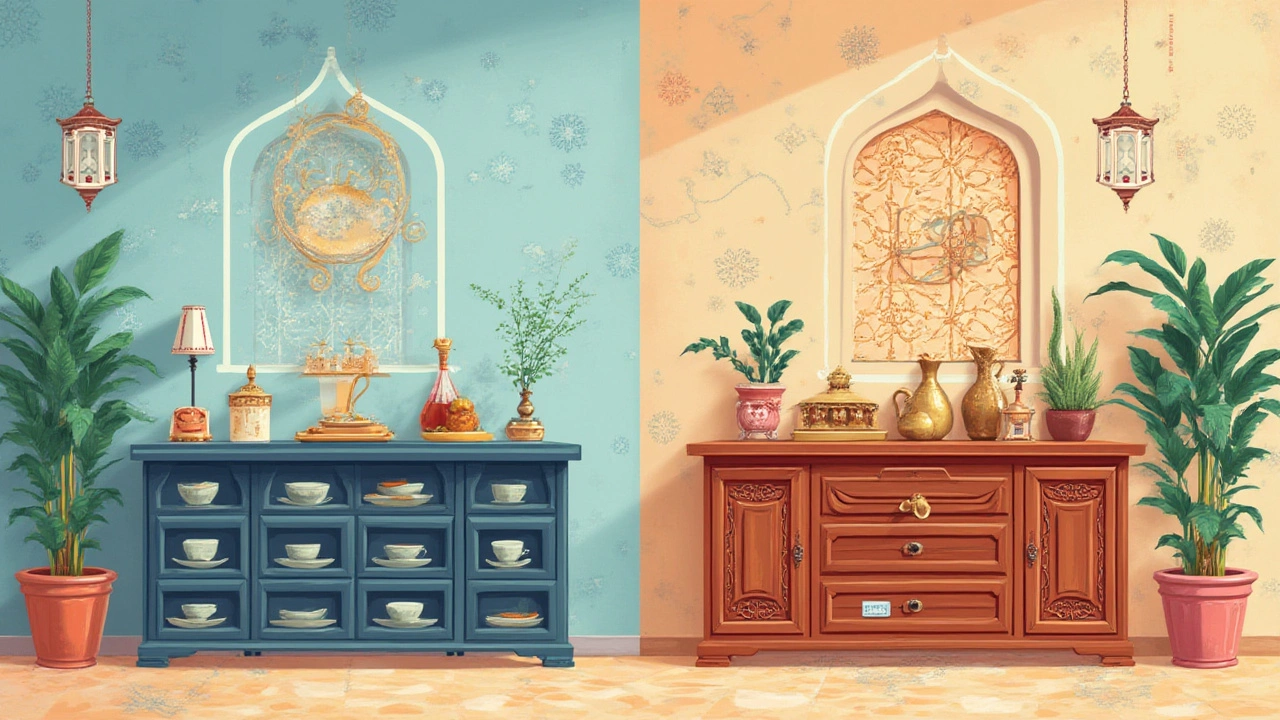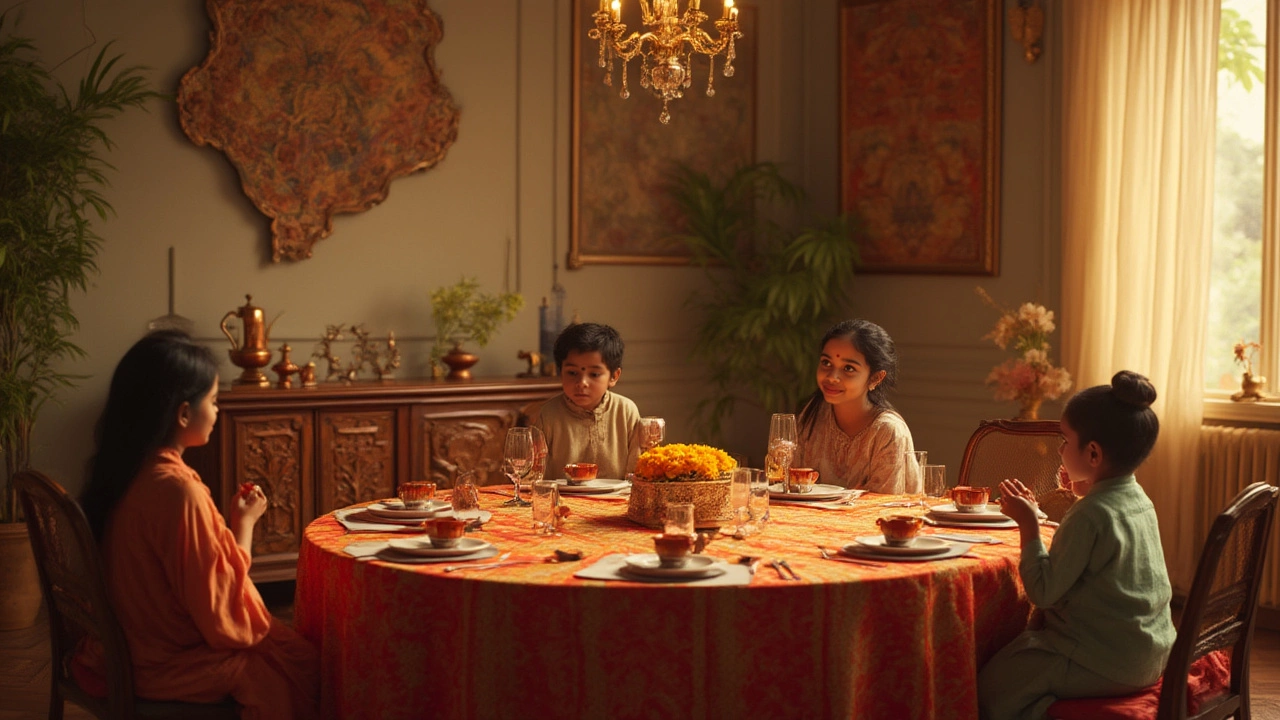Ever tried to shop for dining room furniture and felt lost in the maze of fancy names? It's not just you. The words "server" and "sideboard" get tossed around like everyone should already know what they mean. Truth is, even some furniture salespeople can't clearly tell you where one ends and the other begins. But here's the kicker: the difference matters when you want a piece that fits perfectly in your space and lifestyle—especially if you’re an entertainer or a storage seeker. This isn’t just about labels. It’s about getting more out of your dining room, whether you're hosting a big family holiday or managing a busy weeknight dinner.
The Origins and Evolving Roles of Servers and Sideboards
The original sideboard goes all the way back to the 18th century when formality reigned supreme in dining rooms of upper-class homes. Back then, these pieces weren't just for storage—they were symbols of status. Mahogany, oak, or even rosewood sideboards dominated British and American parlors, with detailed inlays and ornate carvings. If you saw a big, elaborate credenza in someone’s home, you knew their family threw serious dinner parties—or at least wanted you to think so. Even today, specific auction records show that some Georgian-era sideboards have fetched upwards of $50,000 thanks to their craftsmanship and history.
The server, on the other hand, didn’t catch on as a common term until the 20th century. Unlike the sprawling sideboard, the server was created with modern convenience in mind: smaller, lighter, and sometimes on wheels. These were easier to slide into a city apartment or a tight suburban dining area. Think of how lifestyles changed after World War II: weeknight dinners became quicker, but special occasions still called for an extra set of hands—or at least a surface to help serve. People wanted storage, but not at the cost of eating up valuable floorspace.
Today, interior design trends are moving away from the "matchy-matchy" dining set and embracing versatility. According to a 2023 survey by the American Home Furnishings Alliance, over 60% of buyers say they use their sideboard or server as a base for both décor and practical storage. The lines between these furniture types blur even further as manufacturers mix traditional and modern styling.
Server vs Sideboard: What Actually Sets Them Apart?
Let’s get into the nitty-gritty, because there are real differences. The biggest one is size—sideboards are generally wider and deeper, while servers are slimmer and more compact. The typical sideboard runs 60–72 inches wide, 20 inches deep, and stands about 36 inches tall. Servers, meanwhile, often come in at 48–60 inches wide and only about 16–18 inches deep. That extra few inches doesn’t sound like a lot, but it means a sideboard can swallow up more dishes, platters, or even your grandma’s gravy boat collection.
Take a look at the comparison below for a quick side-by-side breakdown:
| Feature | Server | Sideboard |
|---|---|---|
| Width | 48–60 inches | 60–72 inches |
| Depth | 16–18 inches | 20–24 inches |
| Height | 36 inches | 36–42 inches (sometimes with hutch) |
| Typical Placement | Smaller dining areas, entryways | Formal dining rooms, living rooms |
| Storage | Shelves, small drawers | Shelves, larger drawers, cabinets |
| Style Variants | Sleek, modern | Traditional, ornate or transitional |
| Mobility | Often lightweight, sometimes on casters | Heavier, usually stationary |
Servers are at their best when you need an extra hand (or surface!) for food but don’t want to lose half your room to a giant piece of furniture. Sideboards double as storage monsters—perfect for table linens, stacks of plates, and the twelve glasses you only use at New Year’s. Some modern sideboards even offer wine racks, charging stations, or LED lighting, blurring the line with home bars and media consoles.

Real-World Functionality: Choosing What Works For You
The truth is, you probably won’t ever be quizzed on the definition of a sideboard versus a server, but you will absolutely notice if you pick the wrong one for your space. For families with young kids and everyday chaos, sideboards provide that solid, sturdy catch-all for everything from art supplies to napkins. If you love to throw wine tastings or holiday feasts, a server pushes right up against the table and can serve as an impromptu buffet station—breadbasket to the left, pasta trays to the right.
Thinking about your available space helps. Measure before you buy—photos online can’t really communicate just how deep that sideboard delivers. Some folks have found out too late that opening a cabinet door means blocking a walkway. And if you're in a loft or open-plan setting, a sleek server can even double as a room divider without crowding you out of your own home. Remember that modern units come in a wide range of materials, too. Want that classic farmhouse look? Go for a reclaimed wood sideboard with sliding barn doors. Need something kid-proof? Metal or high-gloss laminate finishes handle fingerprints and easy cleaning.
If you're a collector, the sideboard’s bigger drawers offer protection for silverware, delicate china, or cherished photo albums. On the flip side, a narrow server can become a useful charging station. Many newer models now include hidden outlets, so you can pop your phone on the server before hitting the couch. Here’s a tip from experience: Anticipate how you'll use the top surface—fresh flowers, a coffee pot at brunch, a lamp for mood lighting? All good, but watch for heat and spills, which can damage some wood finishes.
Style, Placement, and Mixing With Modern Décor
Let’s talk looks. Sideboards and servers aren’t just about utility; they can set the tone for your whole dining room or entryway. If you lean traditional, there’s something to be said for an antique-style sideboard in cherry or walnut with brass pulls and curved legs. But you don’t have to look like you raided your grandmother’s attic. From glass and metal mid-century styles to industrial servers with iron frameworks, new options suit almost every taste. According to Design Research Monitor’s 2025 data, the most popular finishes for sideboards this year are weathered oak, matte black, and soft white—colors that slide right into minimalist or boho spaces.
A clever trick is to use a server in unexpected spots. Think outside the dining room—a slim server in the hallway for keys, or in the home office for printer supplies. Large sideboards sometimes anchor the living room, holding board games, games consoles, or baskets for quick tidying. Want to switch things up? Stack art or lean a mirror above your sideboard and you suddenly have a showpiece without repainting a single wall.
If you're pulling your hair out trying to coordinate your new purchase with existing pieces, relax. Opposites often attract in modern design. Pair a sleek glass server with a rustic farm table, or a rich, traditional sideboard with modern, colorful chairs. The key: tie the space together with one or two repeated touches, like matching metal hardware or a shared color in your textiles or wall art.

Quick Tips for Buying and Caring for Servers and Sideboards
Picking the right piece doesn’t have to send you down a research rabbit hole. Here are a few no-nonsense tips to keep you on track:
- Supply your measurements: Always bring the room’s dimensions and door openings for reference. Big furniture needs big entryways.
- Think about future use: Today it’s for dishes and candles, but tomorrow you might want it for tech storage or as a coffee bar. Choose something versatile.
- Check the drawers and doors: Do they slide open smoothly? Open all compartments when you test in-store. The hardware matters more than you think.
- Prioritize quality surfaces: Veneer or laminate finishes can look good and last, but solid wood is tougher against scratches and heat if that’s a risk in your house.
- Mind the price: Basic servers start around $200, while ornate antique sideboards can run several thousand. Mid-range models ($400–$900) often offer a great balance of style and durability.
- Avoid humidity: Wood warps over time in muggy spaces. Use furniture pads or felt under legs to guard floors from scratches.
If you're in for a DIY project, some people even repurpose vintage dressers as sideboards or paint an old server to match new color schemes. Remember to anchor heavier items to the wall—especially in homes with children or pets. Stylish organization bins can help keep the insides from becoming a jumbled mess. And when in doubt, add a runner or tray to protect the top and pull in a pop of color.
When you get down to it, the server and sideboard both do their jobs well—but knowing which one fits your home can make all the difference, both in everyday life and when you entertain. So next time someone asks the difference? You’ve got it handled.
